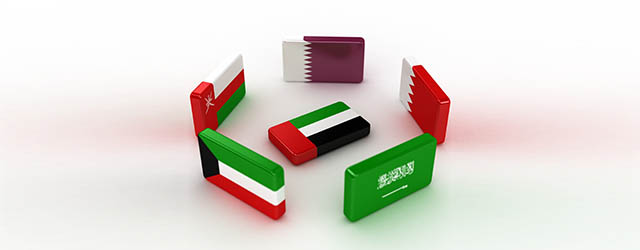With oil prices not expected to top $100 a barrel anytime soon, breaking down trade barriers is the one sure way to boost the GCC’s economic prospects.

Table Of Contents
By the end of this year, the six members of the Gulf Cooperation Council (GCC) will see a decline of $287 billion, or 21%, of GDP in export earnings as a result slumping oil prices, according to the International Monetary Fund.
Admittedly they have, in varying degrees, sizable capital buffers to draw upon, but the great unknown is how long oil prices will remain at suboptimal levels. A return to oil prices above $100 a barrel is a remote prospect, analysts say, and with public spending in the Gulf on the rise, fiscal break-even prices for oil (the price required to balance budgets) are rising rapidly. In the case of Saudi Arabia, it is already close to $100.
According to estimates from the GCC Secretariat’s information division, after the GCC states adopted the first phase of a customs union in 2003, trade between the states grew from $15 billion to $121 billion in 2014. With anticipated improvements in customs technology, that figure is expected to continue its upward trajectory. When the GCC customs union was first created, it was portrayed as the precursor to greater intra-GCC trade, and, with annual growth rates initially exceeding 20%, that objective has been achieved.
Breaking down barriers to trade is an essential goal as GCC countries seek to diversify from their dependence on hydrocarbon revenues. Indeed the IMF has said the region is not doing enough in this respect, although there are exceptions like Dubai that derive a significant amount of GDP from the non-oil sector. In 2015, GDP growth will average 3.4% in the GCC, says the IMF, with inflation remaining largely subdued. Fostering trade flows will also boost job creation in the public and private sector. Unemployment, particularly among young people, is one of the perennial problems confronting the GCC.
For the past 12 years, a full GCC customs union has remained elusive, with states disagreeing on how customs revenues would be distributed among member states. A full customs union was achieved in January this year with agreement that customs revenues collected by each GCC state will be transferred automatically to the state concerned. The development means the GCC is now a free-trade block with a common tariff. Each GCC air, sea or land port acts as a single point-of-entry to any member state, with a 5% duty levied on goods outside the GCC.
But despite progress, GCC trade integration still lags behind most parts of the world. The UAE leads the region, scoring 82.5% on the Trade Freedom Index. The remainder of the GCC scores typically between 70% and 80%
According to analysts, the customs union is vital if the GCC is to achieve a fully-fledged common market and further integration of regional financial markets. Inertia at the political level has prevented development of cross-border regulations that would boost confidence in other jurisdictions. Plans for a GCC monetary union were scuttled after Oman and the United Arab Emirates pulled out. The biggest impetus for further integration has come from the prospect of Iran’s returning to the global economy if sanctions are lifted.
Fahad Al-Turki, chief economist and head of research at Riyadh-based Jadwa Investment, says that despite the rhetoric, intra-GCC trade flows remain modest in global terms and do not warrant coverage. “We haven’t actually looked at intra-GCC trade due to its very small size.”
BOOSTING TRANSPORT LINKS

Greater trade integration has to be underpinned by substantial infrastructure investment in power, water, health and transportation. A pan-GCC transport system, most notably a GCC rail network currently in varying degrees of evolution, is a step in the right direction. Saudi Arabia has the most extensive rail system, and the GCC plan envisages a main line running from Kuwait to Oman, connecting all six member states. The first phase is scheduled for completion in 2017, but there is already speculation that some countries will miss the target date, according to Abu Dhabi National Oil Company.
Despite potential gains offered by increased trade flows, investment in transport infrastructure has been hit by the more-than-50% slide in oil prices. Oman intended to construct a 2,135km rail network, but the project remains at the design/start-up phase, an early indication of the strain the country is feeling from depleted oil revenues.
Still, high-profile projects like the 2022 FIFA World Cup in Qatar are providing the incentive for the GCC to speed up investment, although it remains to be seen whether it has the capability to make the cross-border investment required for the rollout of a full regional network. Qatar is planning to link its rail system with Bahrain’s in the first 156km phase of a 510km network.
The World Economic Forum said in May that more efficient use of public-private partnerships in financing the region’s urgent infrastructure requirement was crucial to alleviate youth unemployment throughout the Middle East.
DITCHING HYDROCARBON DEPENDENCE
A real shift in intra-GCC trade can be achieved only with a concerted drive to reduce reliance on commodities, and that will be the main driver of greater integration. The collapse in oil prices has sparked a discussion on subsidy reforms. The ICAEW (Institute of Chartered Accountants in England & Wales) says that if fuel subsidies are removed during a period of subdued oil prices, the inflationary impact will be less sharply felt by the population, limiting the likelihood of unrest. Since the Arab Spring of 2011, GCC governments have been loath to take steps to rein in expensive subsidies for fear of provoking a populist backlash. Yet reforms make sense and will lead to reduced consumption—the GCC has one of the largest carbon footprints owing to wastage. According to the ICAEW’s Michael Armstrong, regional director for the Middle East, Africa and South Asia, sentiment is also an important factor. “Confidence is one of the key things that needs to be improved, and in order to do this, international comparability, transparency and accountability must be developed.”
With Saudi Arabia, Qatar and the UAE spending $45 billion, $37 billion and $22 billion, respectively, on infrastructure, according to ICAEW estimates, competition for materials and expertise are likely to weigh upon delivery of some of these projects, Armstrong says, noting, “The real economic benefits of this infrastructure will be realized through the competitiveness of downstream sectors, which must be underpinned by sound financial practice.”
Given the possibility that GCC governments will consider turning to debt markets to finance their growing deficits, improvements in governance and transparency will have a much higher priority.
The Gulf is in a period of intense transition. The question is whether the GCC has the collective solidarity to prevail.



